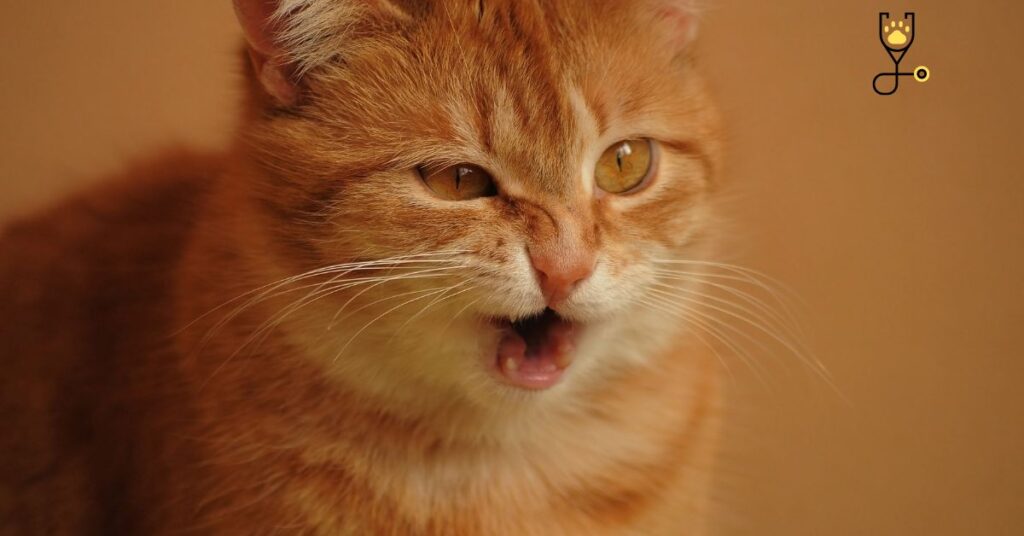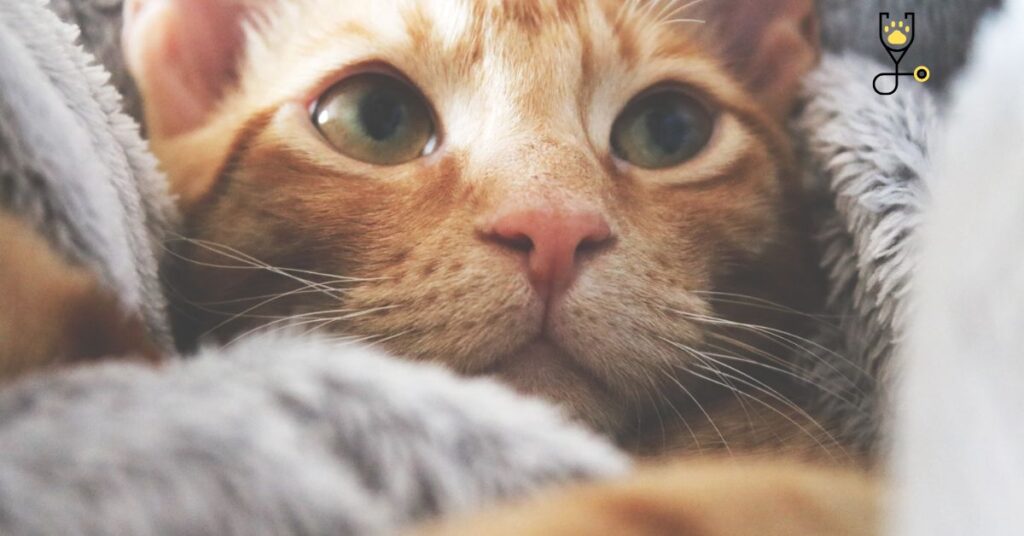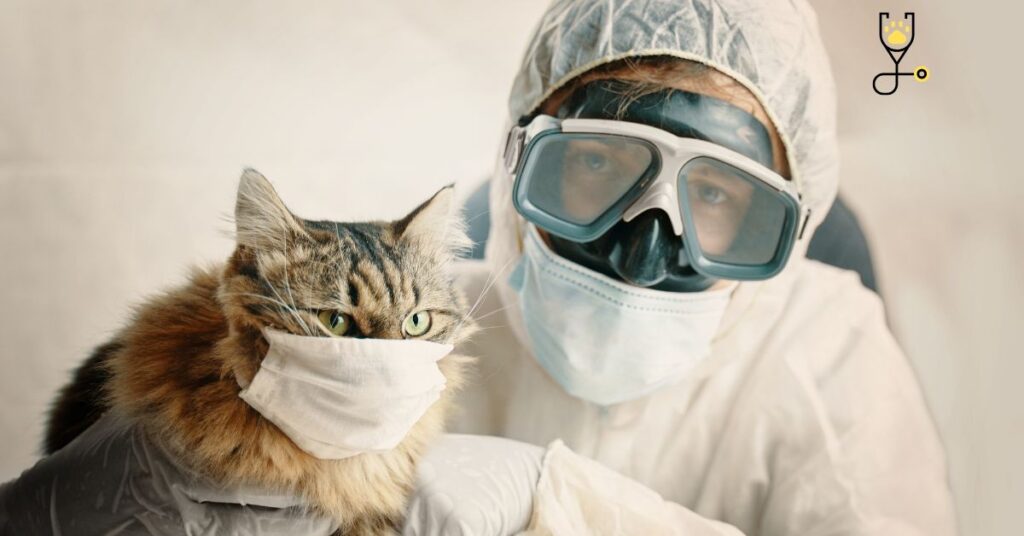Likely you’ve heard of the feline calicivirus (FCV) before, even if you don’t own a cat. This highly contagious virus affects millions of cats around the world each year, causing everything from mild respiratory infections to severe pneumonia. Kittens are particularly vulnerable to FCV, and in this blog post, we’ll discuss what causes this virus, how it’s treated, and ways to help prevent its spread. So if you’re a kitten lover or just curious about this common feline infection, read on!
What is Feline Calicivirus in kittens?
FCV is a member of the Caliciviridae family of viruses, which includes several human pathogens, such as the Norovirus (the “stomach flu” virus). Like many viruses in this family, FCV is highly contagious and can cause a range of symptoms in infected cats, from mild to life-threatening.
While FCV was first identified in the 1970s, it wasn’t until the 1990s that scientists realized just how widespread and dangerous the virus could be. In recent years, FCV has been responsible for outbreaks of respiratory disease in cats all over the world.
Symptoms of Feline Calicivirus in kittens
The symptoms of FCV depend on which strain of the virus a kitten is infected with. Some strains cause only mild respiratory symptoms, while others can lead to life-threatening pneumonia. The most common symptoms of FCV include:
– fever: 105-106° F (40.5-41° C)
– runny nose and eyes: clear or green discharge
– sneezing

– oral ulcers: painful sores in the mouth
– appetite loss
– lethargy
– dehydration
In severe cases, FCV can also cause pneumonia, which can be fatal. Pneumonia caused by FCV is characterized by:
– difficulty breathing
– rapid breathing
– increased heart rate
– increased temperature (106° F or 41° C)
– blue tint to the tongue and gums
Causes of Feline Calicivirus in kittens
FCV is spread through close contact with an infected cat, typically through sharing food and water bowls, grooming each other, or sleeping in the same bed. The virus can also be spread indirectly, on contaminated surfaces like clothes, shoes, or even hands. Once a kitten is infected with FCV, the virus can live in its system for up to 14 days and be shed in its saliva, nasal discharge, and feces.
As we mentioned before, there are many strains of FCV, and some are more severe than others. One particularly virulent strain, known as “feline panleukopenia virus” (FPV), can cause severe illness and death in kittens. FPV is often deadly in young kittens, and even older cats can succumb to the virus if they are not treated promptly.
How is Feline Calicivirus in kittens transmitted?
1. Respiratory secretions: FCV is spread through respiratory secretions, such as saliva, mucus, and blood. When an infected cat sneezes or coughs, the virus is expelled into the air and can be inhaled by other cats.

2. Contact with contaminated surfaces: The virus can also be spread when an uninfected cat comes into contacts with a contaminated surface, such as a food bowl or litter box.
3. Direct contact: FCV can also be spread through direct contacts, such as when an infected cat licks an uninfected cat.
4. Fleas: It’s thought that fleas may play a role in the spread of FCV, as they can transmit the virus from one cat to another.
5. Fomites: FCV can also be spread indirectly via fomites, such as clothing, shoes, and bedding that have been in contact with an infected cat.
6. People: While FCV cannot infect humans, people can spread the virus to other cats. For example, if you pet an infected cat and then pet another cat, you can transfer the virus from the first cat to the second.
7. Animals: Other animals, such as dogs and rabbits, can also spread FCV to cats.
How is Feline Calicivirus in kittens diagnosed?
FCV is typically diagnosed based on a combination of clinical signs and laboratory testing. Your veterinarian will likely start by taking a thorough history and performing a physical examination. If they suspect your kitten has FCV, they will order one or more of the following tests:
1. Complete blood count (CBC): This test measures the number of different types of cells in the blood and can help to identify an infection.
2. Biochemical profile: This test measures various chemicals in the blood and can help to assess organ function.
3. Urinalysis: This test can help to identify dehydration and kidney problems.
4. X-rays: X-rays may be taken to look for signs of pneumonia.
5. Virus isolation: In this test, a sample of mucus or saliva is taken from the kitten and cultured in the laboratory in an attempt to grow the virus.
6. Antibody testing: In this test, a blood sample is taken from the kitten and tested for antibodies to FCV. The presence of antibodies indicates that the kitten has been infected with the virus.
7. PCR testing: In this test, a sample of mucus or saliva is taken from the kitten and tested for the presence of FCV DNA.
Treatment of Feline Calicivirus in kittens
There is no specific treatment for FCV, and most infected kittens will require supportive care. Treatment focuses on relieving symptoms and supporting the kitten’s respiratory and immune systems. Treatment may include:
1. Fluids: Kittens with FCV are often dehydrated and may require fluids to prevent dehydration. Fluids may be given intravenously (IV) or subcutaneously (under the skin).
2. Antibiotics: Antibiotics may be prescribed to treat secondary bacterial infections.

3. Pain relief: Kittens with FCV often have oral ulcers, which can be painful. Pain relief may be given to help make the kitten more comfortable.
4. Nutritional support: Kittens with FCV often have a decreased appetite and may need to be fed through a tube.
5. Oxygen therapy: Oxygen therapy may be necessary for kittens with pneumonia.
6. Treatment of underlying conditions: If the kitten has an underlying condition, such as feline leukemia virus (FeLV) or feline immunodeficiency virus (FIV), treatment will focus on managing that condition.
The prognosis for Feline Calicivirus in kittens
The prognosis for kittens with FCV is variable and depends on the severity of the infection. Some kittens will recover without any problems, while others may have long-term health issues or die from the infection. Kittens with underlying health conditions, such as FeLV or FIV, often have a poorer prognosis.
Preventions of Feline Calicivirus in kittens
The best way to prevent FCV is to have your kitten vaccinated against the virus. Kittens should receive their first vaccine at 8-10 weeks of age, with booster shots are given every 3-4 weeks until they are 16 weeks old. After that, booster shots should be given every year. If your kitten is at high risk for exposure to the virus (for example, if they go outside or live in a multi-cat household), your veterinarian may recommend giving booster shots more frequently. In addition to vaccination, good hygiene practices can help to prevent the spread of FCV. These include:
1. Washing your hands: Be sure to wash your hands after petting any cat, even if they are vaccinated.
2. Keeping sick cats isolated: If you have a sick cat in your home, be sure to keep them isolated from healthy cats.
3. Cleaning and disinfecting: Be sure to clean and disinfect any surfaces that a sick cat has had contacts with, such as food bowls and litter boxes.
4. Avoid contact with other cats: If you have a kitten that is not yet vaccinated, avoid contact with other cats until they have completed their vaccine series.
Conclusion
Feline calicivirus (FCV) is a highly contagious virus that can cause a variety of symptoms in infected kittens, ranging from mild to severe. There is no specific treatment for FCV, and most infected kittens will require supportive care. The best way to prevent FCV is to have your kitten vaccinated against the virus. Good hygiene practices can also help to prevent the spread of the virus.
Frequently Asked Questions (FAQs)
1. What is feline calicivirus?
Feline calicivirus (FCV) is a highly contagious virus that can cause a variety of symptoms in infected kittens, ranging from mild to severe.
2. How is feline calicivirus spread?
FCV is spread through contact with an infected cat’s saliva, mucus, or feces. It can also be spread through contact with contaminated surfaces, such as food bowls and litter boxes.
3. What are the symptoms of feline calicivirus?
The symptoms of FCV vary depending on the severity of the infection. Mild symptoms may include fever, runny nose, and watery eyes. More severe symptoms may include vomiting, diarrhea, pneumonia, and death.
4. Is there a treatment for feline calicivirus?
There is no specific treatment for FCV, and most infected kittens will require supportive care. The best way to prevent FCV is to have your kitten vaccinated against the virus. Good hygiene practices can also help to prevent the spread of the virus.
5. What is the prognosis for kittens with feline calicivirus?
The prognosis for kittens with FCV is variable and depends on the severity of the infection. Some kittens will recover without any problems, while others may have long-term health issues or die from the infection. Kittens with underlying health conditions, such as feline leukemia virus (FeLV) or feline immunodeficiency virus (FIV), often have a poorer prognosis.







